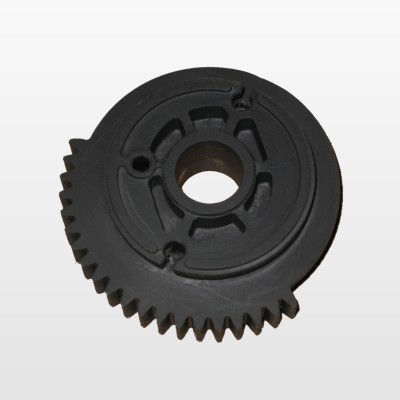Density (g/cm³)
For a homogeneous object, Density = Mass Divided By Volume. The higher the density, the tighter the particles are packed inside the substance. The Specific Gravity is the ratio of Density of the material to the Density of water at a specified temperature. It is common to use the density of water at 4°C as reference - at this point the density of water is at the highest i.e. 1 g/cm3. So Specific Gravity of less than “1” means that the material will float in water.
- ABS
g/cm³- PC
g/cm³- PP
g/cm³- ACETAL(POM)
g/cm³- ACRYLIC(PMMA)
g/cm³- NYLON
g/cm³- HDPE
g/cm³
Snapshot of Nylon Plastic
Nylon plastic Description
Nylon is a generic designation for a family of synthetic polymers known generically as PA PolyAmides. Nylons (Polyamides) comprise the largest family of engineering plastics with a very wide range of applications. Nylons are generally Strong, Tough and Wear Resistant.
Advantages of Nylon parts
Excellent abrasion resistance, High elongation, Good resistance to fuels, oils and solvents but is affected by acids and strong bases. Good Toughness, High Tensile Strength, High Impact Resistance, Good Dimensional Stability.
Nylon plastic Uses
Ideal for wear applications such as Bearings and Gears, Sporting goods, Fishing line, Automotive parts, Tanks, Engineering parts, Power tools, Intake manifolds.
Finishing examples of Nylon prototypes
Available Finishes
- Machine finish
- Polished finish
Nylon material Spec
| Property | Data |
|---|---|
Density
|
1.14 g/cm3 |
Water Absorption-24 Hours (%)
|
1.90 % |
Tensile Strength (Mpa)
|
73 Mpa |
Tensile Modulus (GPa)
|
2.30 GPa |
Flexural Strength (MPa)
|
80 Mpa |
Vicat Softening Temp (℃)
|
170℃ |
Heat Deflection Temp - 1.8MPa (℃)
|
75℃ |
Coefficient of Friction
|
0.35 |
Note: This Data is indicative only
|
|
Further considerations
Nylons are commonly used in textiles, automotive, carpet and sportswear due to their extreme durability and strength. Nylon has better wear-resistance than Acetal, but do not have good moisture resistance which makes it unsuitable to high-humidity.
Limitations
High moisture absorptivity degrades electrical and mechanical properties. Attacked by strong acids, Bases, Oxidizing agents. High Notch sensitivity.
Available grades of Nylon?
- Plain Nylon (PA6)
- 15% Glass Filled Nylon
- 30% Glass Filled Nylon




